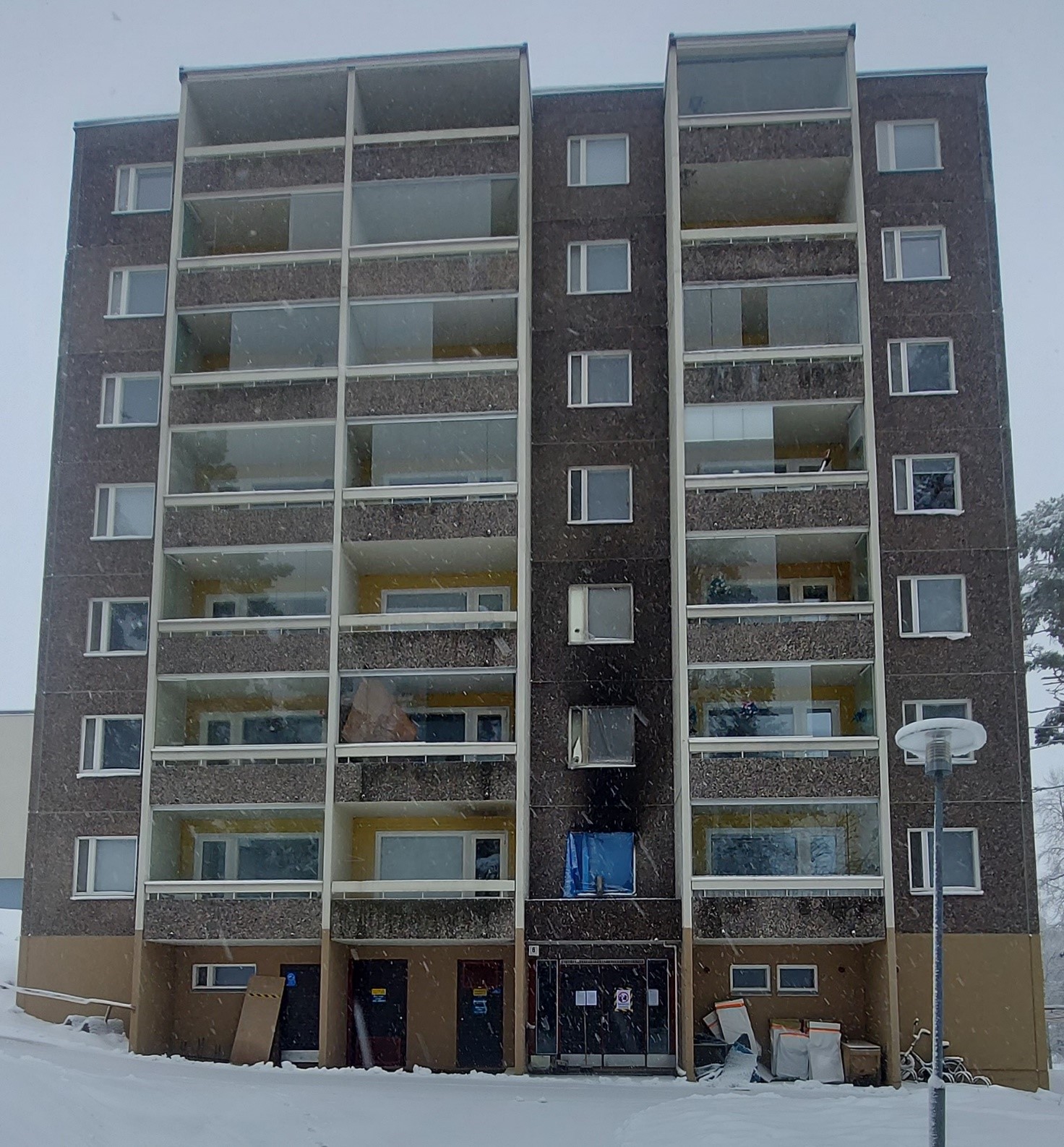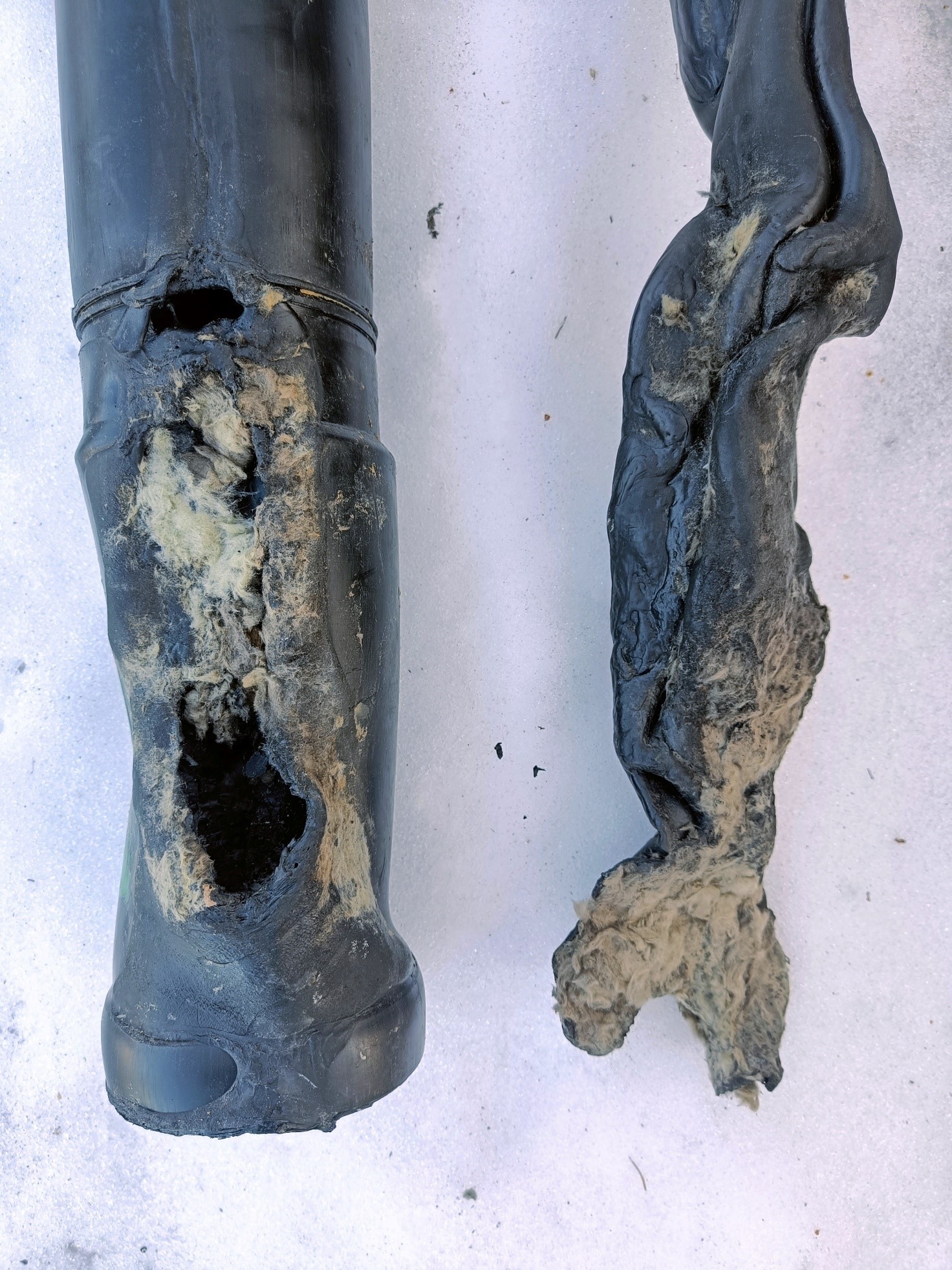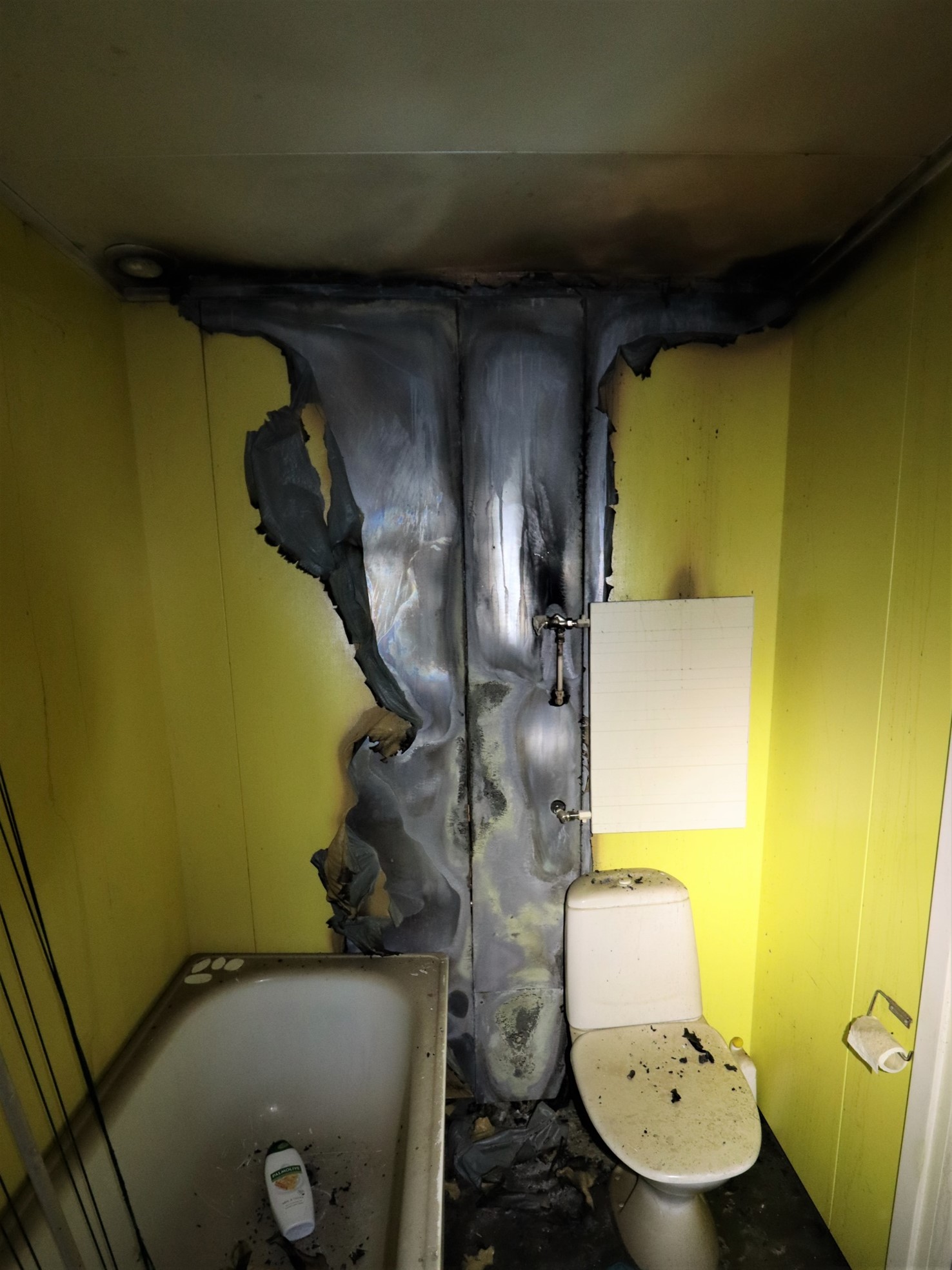Y2023-E1 A fire that spread from one flat to another in a block of flats in Jyväskylä on 19 March 2023
Description of the incident
In the morning of 19 March 2023, the kitchenette of a flat on the lowest residential floor of a block of flats in Jyväskylä caught fire. The resident went into the staircase and lost consciousness in front of the flat. The door of the flat remained open, allowing the smoke to spread freely into the staircase.
The resident of the flat above the burning flat observed that smoke was entering said resident's flat through the structures between the kitchenette and the bathroom. The resident made an emergency call and went to the balcony. The resident noticed that there were flames behind the kitchen window of the flat below. A moment later, the window broke.
The first of the alerted units to arrive at the scene was the emergency medical care unit; the firefighter working in the unit went into the staircase to investigate the situation. The firefighter went up to the first residential floor and noticed that the staircase above was filled with smoke. The firefighter moved forward while in a low position, closed the door of the burning flat and carried the unconscious person in the staircase outside. After receiving a master key from the representative of the housing company, the firefighter also checked the other flats on the floor where the fire had started.
The smoke in the staircase prevented safe exit from the higher floors, and residents gathered on balconies. The hydraulic platform of the Rescue Department was moved to the fairly steep and narrow road leading to the front of the main doors of the building. The rescue of the people on balconies began.
The personnel of the rescue unit extinguished the flat that had caught fire and inspected the flat above, where no signs of a fire were detected at that point. The firefighters in the other rescue unit went up the staircase to investigate ways of removing smoke from the staircase. They found an unconscious resident on the level of the fourth floor and carried the resident outside.
The hydraulic platform was used to rescue residents from the balconies on the side of the main façade. It was discovered that the flat above the flat where the fire had started, which already been inspected once, was also on fire. The fire was extinguished. During the extinguishing, structures in the shaft between the kitchenette and the bathroom were demolished. The fire had been behind the bathroom wall, and air for the fire had come through the wall sewer drain. The flat at the same point on the next floor was inspected. Smoke damage was found in the flat, but no fire.
When the investigation of the staircase that had been interrupted and started again progressed to the top level, it was discovered that the skylight could not be opened from the staircase. The hydraulic platform was used to break the skylight cover and the smoke ventilation of the staircase could be completed. After the smoke ventilation, residents were evacuated via the staircase with the help of an escape hood. An escape hood is a hood equipped with an aspirating filter that is pulled over the head.
Two seriously injured persons were transported to the hospital, and a third person also needed some treatment.
The block of flats was built in 1976. The lowest floor contains storage areas, technical areas and a passage from the front door into the staircase in the middle of the building. There are seven residential floors, and they have the same layout. Each floor has five flats.
The building has five shafts reserved for technical building services between the bathroom and the kitchen that pass through all residential floors. The bathrooms were sheet metal elements, and the shafts and its installations were a part of them. The shaft contained insulated sewer and water pipes, kitchen and bathroom air pipes as well as electric cables. The shaft was closed off between the floors with concreting.
During the investigation, it was discovered that the combustion gases had first spread from the flat where the fire started into the spaces above via the lead-throughs in the shaft. Some of the fire insulation in the shaft was factory-made, but the joints and their insulation had been made at the worksite. The fire insulation of the sewer pipe was not sufficient; instead, it allowed the pipe to heat up. The hot plastic pipe shrank, which created a crack between the pipe and the concreting. Hot combustion gases leaked into the shaft of the flat above and the empty space above the bathroom, from which they travelled further through cracks into the other spaces in the flat.
Observations
The fire door between the staircase and the flat that was on fire was left open, and as a result, combustion gases entered the staircase. Usually, a fire door must be self-closing and self-locking; however, a door closer is not required in the floor level doors of residential flats of buildings less than 56 metres tall. Therefore, the doors of flats in blocks of flats usually do not have a door closer. With a door closer, the risk posed by the fire to the residents as well as the smoke damage would have remained clearly less severe. It is possible and reasonable for housing companies to install door closers on the doors of flats independently.
It was not possible to arrange for the smoke ventilation of the staircase from the staircase itself; instead, it required breaking the skylight from the outside by using a hydraulic platform. Arranging for the smoke ventilation was slow, and it interrupted the rescue activities for a moment. A good staircase smoke ventilation arrangement would make it possible to open the smoke vents from the entrance level.
One resident of the upper floors went out of the flat and into the staircase. Usually, a block of flats with a maximum of 8 floors has one exit, that is, the staircase. In addition to the exit, each flat must have an emergency exit. Often the emergency exit is the balcony, and the Rescue Department is needed to exit from there. In order for the emergency exit to work, the yard should have suitable emergency access roads and lifting sites. The residents should be informed about the emergency access road arrangements and instructions on what to do in case of a fire with an emergency plan. One must not enter a staircase filled with smoke.
Old buildings may have different kinds of lead-through solutions, which may not be sufficient based on the currently available information. Repairs made over the years may have reduced the functionality of the solutions. Rescue departments should take potential deficiencies in lead-throughs into account in their fire extinguishing activities.
The Safety Investigation Authority has examined door closers, smoke ventilation in staircases and the vulnerability of rescues using a hydraulic platform especially in the investigation Y2014-02 into the fire in a block of flats in Turku on 17 March 2014. The implementation of the recommendations has been poor. Emergency access road arrangements, smoke ventilation and exiting through the staircase has also been discussed in the investigation B2/2020Y into the fire in a pizzeria in Tampere on 22 November 2010. In that case, three people died in the staircase.
Fire in a block of flats in Lahti
In the early hours of Easter Monday on 10 April 2023, a fire occurred in a block of flats in Lahti, in which several people who entered a smoke-filled staircase were severely injured. The person who left the flat where the fire started left the door of the flat open when exiting, allowing the smoke to enter the staircase without any obstacles. In this case, too, an automatic door closer would have been helpful.
According to the statistics of Emergency Services, nearly one fourth of all building fires in 2016–2020 occurred in blocks of flats. On average, more than 1,200 of such fires occurred in blocks of flats annually.
Further information:
Chief Safety Investigator Kai Valonen (SIA), tel. +358 (0)2951 50707; email: [email protected]; @KValonen



Published 12.4.2023
